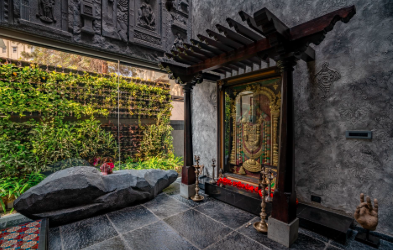
The Best Ganesha Statues for Your Pooja Room and Living Space
Lord Ganesha, the beloved elephant-headed deity, is a prominent figure in Hinduism, symbolizing wisdom, prosperity, new beginnings, and the removal of obstacles. Whether you’re setting up a pooja room at home or looking to enhance the decor of your living space, a Ganesha statue can play a significant role. Not only does it serve as a focal point for spiritual practices, but it also brings an aura of positivity, calm, and divine blessings to your home.
In this blog post, we will explore the different types of Ganesha statues, their significance, and how to choose the best one for your pooja room and living space. From traditional to contemporary designs, we’ll discuss the various materials, sizes, and styles, so you can make an informed decision on the perfect Ganesha statue for your home.
1. The Significance of Ganesha Statues
Lord Ganesha, the son of Lord Shiva and Goddess Parvati, is revered for his ability to remove obstacles, bestow good fortune, and bring success. People place Ganesha statues in their homes to seek blessings for prosperity, health, and success in all endeavors. His unique elephant head symbolizes wisdom, and his large ears represent the ability to listen carefully, while his small mouth signifies speaking less and contemplating more.
Symbolism in Ganesha Statues
- Elephant Head: The elephant head represents intelligence, wisdom, and the overcoming of obstacles. It is believed that Ganesha’s presence helps in clearing obstacles in life, be they material or spiritual.
- Mouse (Vahana): Ganesha’s companion, the mouse, symbolizes the ability to control desire and greed. It signifies humility, the conquering of one’s desires, and the importance of perseverance.
- Four Arms: Ganesha’s four arms are symbolic of his power to perform many tasks at once, each hand carrying a different symbolic item:
- Axe (Parashu): Cuts away attachments and unnecessary material desires.
- Lotus: Represents purity and spiritual growth.
- Modak (Sweet): A symbol of rewards earned through hard work and dedication.
- Blessing Hand: The gesture of blessing signifies the bestowal of wisdom, protection, and abundance.
With this in mind, choosing the right Ganesha statue for your space isn’t just about aesthetics—it’s about inviting divine energy and blessings into your home.
2. Choosing the Best Ganesha Statue for Your Pooja Room
The pooja room is a sacred space dedicated to worship, and it deserves special attention when selecting decor. A Ganesha statue in the pooja room serves not only as a spiritual anchor but also as a source of peace, positivity, and divine guidance.
Traditional Ganesha Statues for Pooja Rooms
Traditional Ganesha statues are the most popular choice for pooja rooms because they embody the spiritual essence of the deity. These statues typically feature intricate designs, a serene expression, and fine details that make them suitable for the ritualistic and spiritual practices conducted in the pooja room.
- Brass Ganesha Statues: Brass is one of the most popular materials for traditional Ganesha statues, as it exudes a timeless, regal appearance. Brass Ganesha statues often feature exquisite detailing, and their metallic sheen adds to the sense of luxury and divinity. These statues are sturdy, long-lasting, and represent the traditional style of worship.
- Where to Place: Place a brass Ganesha statue in the center of your pooja altar, ideally on a wooden platform or puja thali (prayer plate). Ensure that the statue faces east or north, which is considered auspicious.
- Marble or Stone Ganesha Statues: Marble and stone are also traditional materials that lend a sense of grandeur and permanence to the pooja room. The smooth, pure appearance of white marble Ganesha statues symbolizes purity, while black stone statues convey power and protection.
- Where to Place: A marble Ganesha statue works well in a minimalist, serene pooja space. It complements the peaceful, contemplative atmosphere and can be surrounded by candles or incense.
- Wooden Ganesha Statues: For a more earthy, organic feel, a wooden Ganesha statue is an excellent choice. Wooden carvings, especially those made from teak or rosewood, bring warmth and natural beauty to the pooja room. The carvings are often intricate, showcasing the delicate craftsmanship of the artisan.
- Where to Place: Wooden statues are perfect for creating a more rustic or earthy ambiance in the pooja room. The natural grains of the wood harmonize beautifully with other natural elements, such as wooden furniture and earth-toned textiles.
- Ganesha with His Vehicle (Vahana): Some traditional Ganesha statues also depict him seated on his vehicle, the mouse. These statues are believed to bring harmony and balance to the space, reflecting the relationship between wisdom (Ganesha) and humility (the mouse).
- Where to Place: These statues are typically larger and can serve as the main focus of the pooja altar.
Contemporary Ganesha Statues for Pooja Rooms
While traditional Ganesha statues are classic and always in style, modern interpretations of Ganesha have also gained popularity, especially in urban homes where space is a constraint. Contemporary designs often blend traditional symbolism with sleek, minimalist aesthetics.
read also: The Evolution of Data Security in Business
- Abstract or Minimalist Ganesha Statues: In urban spaces, minimalist decor is a growing trend. Abstract Ganesha statues, often made from materials like resin, glass, or ceramic, combine the symbolic aspects of the deity with a modern design sensibility. These statues tend to be simple yet powerful, with smooth lines and soft curves.
- Where to Place: These minimalist statues are perfect for small, modern pooja rooms, where they can be placed on a sleek, white marble platform or glass shelf to maintain a calm, uncluttered space.
- Contemporary Metal Ganesha Statues: Contemporary Ganesha statues made of bronze, stainless steel, or even aluminum are gaining popularity for their polished, sleek appearance. These statues often feature more geometric and abstract designs that combine traditional symbolism with modern artistry.
- Where to Place: These statues are well-suited to a minimalist pooja room with a modern twist. You can place them against a neutral-colored backdrop to highlight their striking form.
Size and Placement Tips for Pooja Rooms
- Size: For a pooja room, the size of the Ganesha statue depends on the size of the room. A medium-sized statue is usually ideal, as it allows for easy placement on an altar or small platform. Larger statues are better suited for more spacious pooja rooms or for outdoor spaces.
- Placement: Place the Ganesha statue at the center or slightly to the right of the altar. Avoid placing the statue directly on the floor; instead, elevate it slightly on a wooden platform or pedestal to symbolize its divine status.
3. Ganesha Statues for Living Rooms
While pooja rooms are dedicated to worship and spiritual practices, Ganesha statues also have a place in the living room, where they can create an atmosphere of positivity, peace, and warmth.
Ganesha Statues as Decorative Pieces
In the living room, a Ganesha statue serves not only as a spiritual artifact but also as a statement piece of decor. Whether you choose a traditional, detailed statue or a more modern, abstract one, placing Ganesha in a central area of the living room can enhance the overall aesthetic while bringing divine blessings.
- Brass or Bronze Ganesha Statues: Brass and bronze Ganesha statues, with their warm tones, work well in living rooms that feature wooden furniture or earthy color palettes. These metals exude a sense of luxury and sophistication while keeping the spiritual essence of the room intact.
- Where to Place: A large brass or bronze Ganesha statue can be placed on a side table, mantelpiece, or console in the living room. Make sure to position it in an area where it can be admired, but not overshadow other key elements of the room.
- Glass or Resin Ganesha Statues: For a more contemporary touch, choose a glass Ganesha statue or one made of resin. These materials lend a sleek, modern look that complements contemporary living room settings. Resin Ganesha statues are often highly detailed and lightweight, making them easy to move around.
- Where to Place: Glass or resin Ganesha statues can be placed on bookshelves, coffee tables, or mantelpieces. The transparency of glass adds a light, airy feel, while resin statues can be paired with other decorative items to create an eclectic, bohemian look.
- Wall-Mounted Ganesha Statues: If you’re short on space or want to create a unique focal point, consider a wall-mounted Ganesha statue. These statues are designed to be affixed to the wall, creating a bold, three-dimensional effect.
- Where to Place: A wall-mounted statue is perfect for entryways or as a focal point in the living room. It is a great way to save space while still incorporating the divine presence of Lord Ganesha into the home.
Positioning Ganesha Statues in the Living Room
- East or North Direction: Just as in the pooja room, Ganesha statues in the living room should ideally face either east or north, as these directions are considered auspicious in Vastu Shastra (traditional Indian architecture).
- Elevated Placement: As with the pooja room, elevate the statue slightly from the floor to give it prominence. A pedestal or decorative shelf can help highlight the statue while ensuring it remains the centerpiece of the room.
4. Conclusion
Choosing the right Ganesha statue for your home involves more than just selecting an attractive piece of decor. It is about aligning with the spiritual significance of the deity, creating a harmonious atmosphere, and inviting blessings into your life. Whether you prefer a traditional brass or marble Ganesha for your pooja room or a modern, minimalist resin or glass statue for your living room, the presence of Lord Ganesha will infuse your space with positivity, prosperity, and peace.
As you choose the perfect Ganesha statue for your home, remember to focus on the symbolism, materials, and placement to create an environment that supports your spiritual practices while enhancing the beauty of your living spaces. A Ganesha statue isn’t just a decoration; it’s a spiritual companion that fills your home with divine energy.




